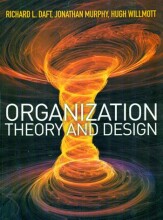What is UML? - UML Goals - The Original goals of UML
6 important questions on What is UML? - UML Goals - The Original goals of UML
When the Three Amigos and the UML Partners made their first proposal of UML to OMG, they established four goals for UML, which remain goals for UML:
1. To model systems (and not just software) using object-oriented concepts
2. To establish an explicit coupling to conceptual as well as executable artifacts
3. To address the issues of scale inherent in complex, mission-critical systems
4. To create a modeling language usable by both humans and machines
By the time UML reached version 1.3 in March 2000, UML was aimed at all types of systems.
It became a language for....
- analyzing
- specifying
- visualizing
- designing
- constructing
- documenting
the artifacts of software-intensive systems
as well as for business modeling and other
nonsoftware systems and domains.
UML continues to represent a collection of ...
the best engineering and modeling practices that have proven successful in the making of large and complex systems
- Higher grades + faster learning
- Never study anything twice
- 100% sure, 100% understanding
What are powerful object-oriented techniques?
- Generalization
- Inheritance
- Abstraction
UML integrates powerful nonobject-oriented modeling techniques such as...
- Composition
- Data and Control Flows
- State machines
Why does UML use object-oriented techniques and nonobject-oriented techniques?
Because you may also want to use these techniques in many systems approaches.
When modeling with UML, invariably one uses both object-oriented and nonobject- oriented approaches in the same model.
When modeling with UML, invariably one uses both object-oriented and nonobject- oriented approaches in the same model.
Try our study magic for free
a PDF, study it super fast
- No sign up, email or credit card needed!
- AI makes unlimited flashcards
- Get unlimited quizzes and tests
- Ask AI anything
Create a notebook
- No sign up, email or credit card needed!
- Have and keep perfect overview
- Make flashcards, notes and mind maps
- Review, test and score!
The question on the page originate from the summary of the following study material:
- A unique study and practice tool
- Never study anything twice again
- Get the grades you hope for
- 100% sure, 100% understanding
Remember faster, study better. Scientifically proven.
































